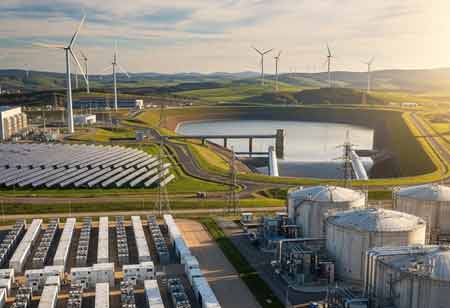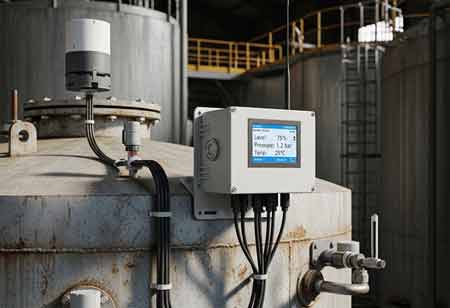CLOSE
Specials
I agree We use cookies on this website to enhance your user experience. By clicking any link on this page you are giving your consent for us to set cookies. More info
Be first to read the latest tech news, Industry Leader's Insights, and CIO interviews of medium and large enterprises exclusively from Energy Tech Review
Thank you for Subscribing
Unlocking Grid Resilience Through Long-Duration Storage Innovation
Utilities are increasingly adopting Long Duration Energy Storage (LDES) technologies for grid flexibility, enhancing resilience and supporting the transition to a sustainable, decarbonized energy system.

By
Energy Tech Review | Tuesday, September 09, 2025
Stay ahead of the industry with exclusive feature stories on the top companies, expert insights and the latest news delivered straight to your inbox. Subscribe today.
Fremont, CA: The rapid rise of intermittent renewable energy sources, such as wind and solar, has created a critical need for grid flexibility. While short-duration batteries (typically 2-4 hours) have become a standard tool for daily energy shifting and ancillary services, the industry is now turning its attention to a new frontier: Long Duration Energy Storage (LDES). LDES, defined as systems capable of discharging for 10 hours or more, is no longer a theoretical concept. Utilities are moving LDES from the lab to large-scale, real-world deployments, transforming their grids and building a more resilient, decarbonized future.
The Growing Role of Long-Duration Energy Storage
LDES is moving from concept to deployment, as utilities and developers worldwide invest in these technologies. Thermal storage solutions are also gaining traction, helping industries reduce fossil fuel reliance by converting surplus renewable energy into stored heat. Additionally, hydrogen and other chemical storage technologies are advancing toward early-stage commercialization.
To capture the full value of LDES, utilities and regulators are adapting procurement models that account for multi-day discharge capability and site-specific advantages. Resource adequacy frameworks are evolving toward metrics such as “expected unserved energy” (EUE), which better reflect the system reliability contributions of long-duration storage. Power Purchase Agreements (PPAs) are increasingly incorporating provisions that reward duration and resilience, ensuring revenue certainty for capital-intensive projects. At the same time, state-level mandates and targets are being established to encourage utilities to integrate LDES into their portfolios.
Lessons Learned from Early Adopters
The first wave of LDES projects has delivered valuable lessons for utilities and developers, particularly in navigating technical, financial, and regulatory complexities. A key insight is the importance of value stacking—LDES systems achieve the greatest economic viability when they can access multiple revenue streams, from energy and capacity markets to ancillary services such as voltage support and frequency regulation. Early deployments have also underscored the need for technology-specific considerations, as different chemistries exhibit varying sensitivities to temperature, degradation profiles, and thermal management requirements. Equally critical is site selection, where proximity to transmission infrastructure and compliance with environmental and permitting regulations can significantly influence project outcomes. Perhaps most importantly, the success of LDES depends on policy and regulatory alignment. Existing market structures, built around fossil-fuel-centric grids, often fail to capture the full value of LDES, making continuous regulatory reform essential to accelerate large-scale adoption and deployment.
The journey from pilot to portfolio for long-duration storage is well underway. While challenges remain, a confluence of maturing technologies, innovative procurement models, and a growing recognition of the need for grid resilience is propelling the LDES market forward. As utilities continue to deploy these projects and share their lessons learned, they are not only solving the technical challenges of integrating high levels of renewables but also building the foundational infrastructure for a truly sustainable and resilient energy system of the future. The transition to a clean grid requires more than just generation—it requires the ability to store and dispatch clean power around the clock, and LDES is proving to be the linchpin of that transformation.

Copyright © 2025 Energy Tech Review. All rights reserved






